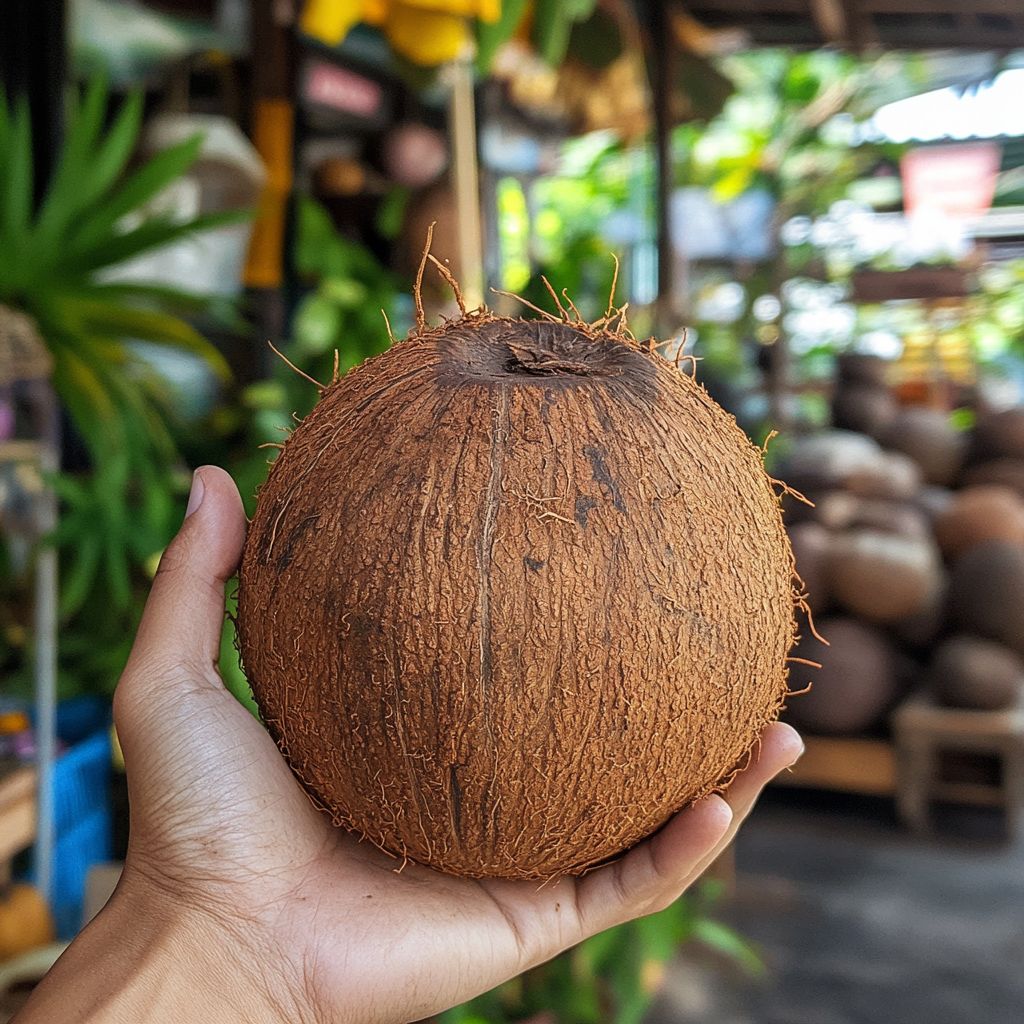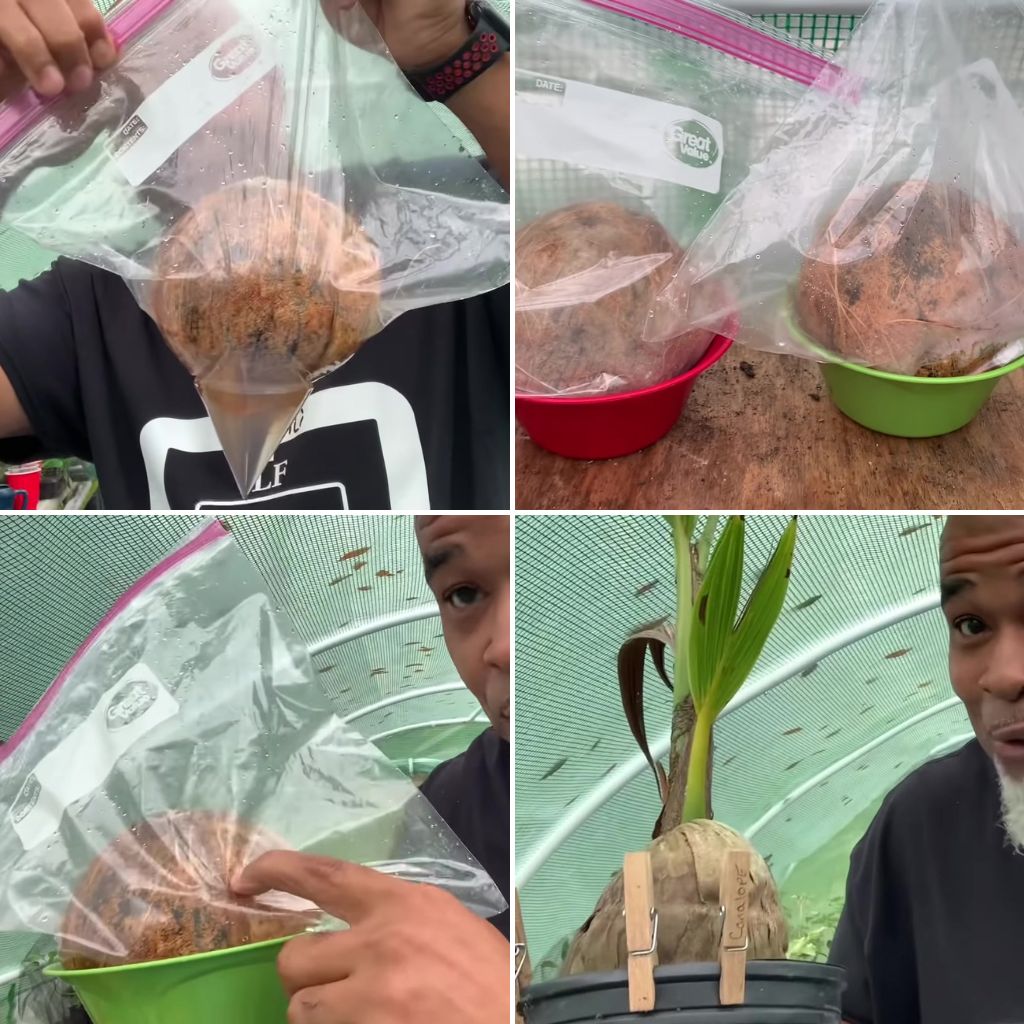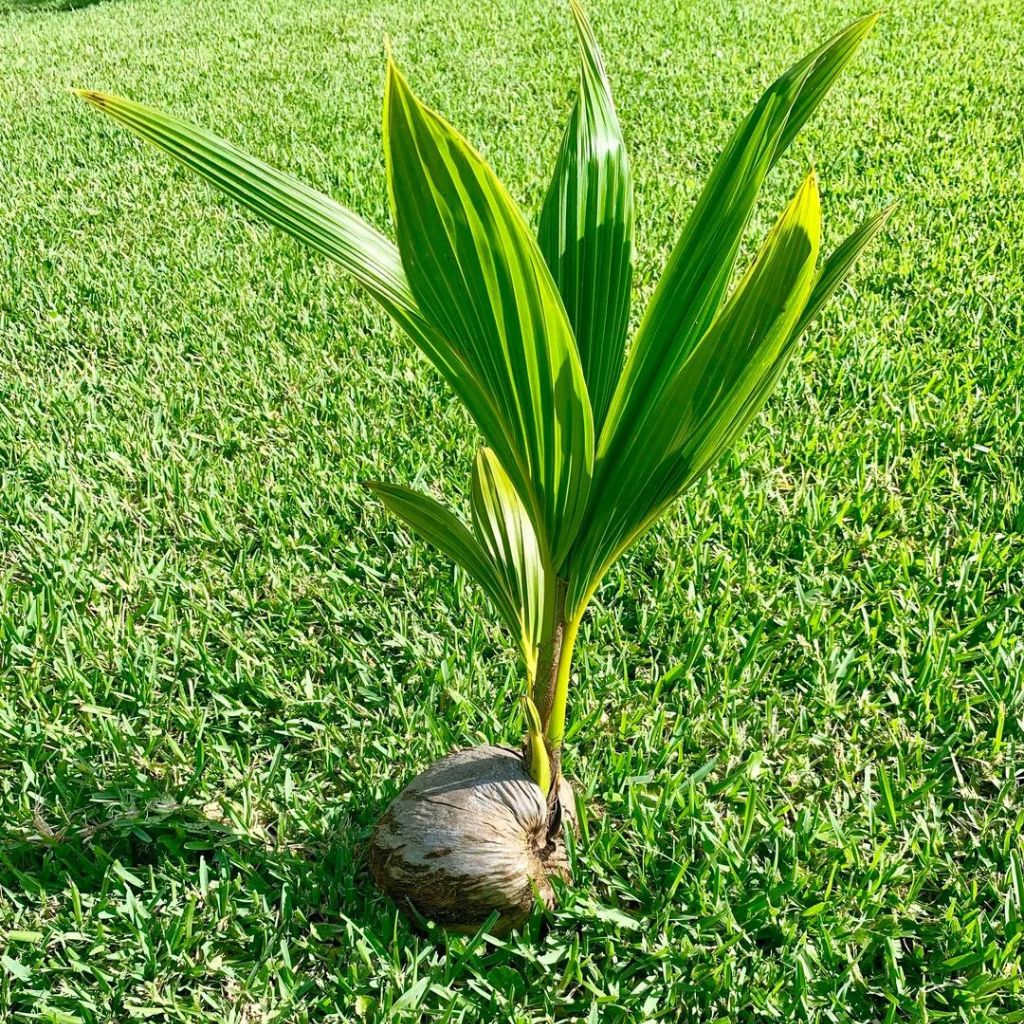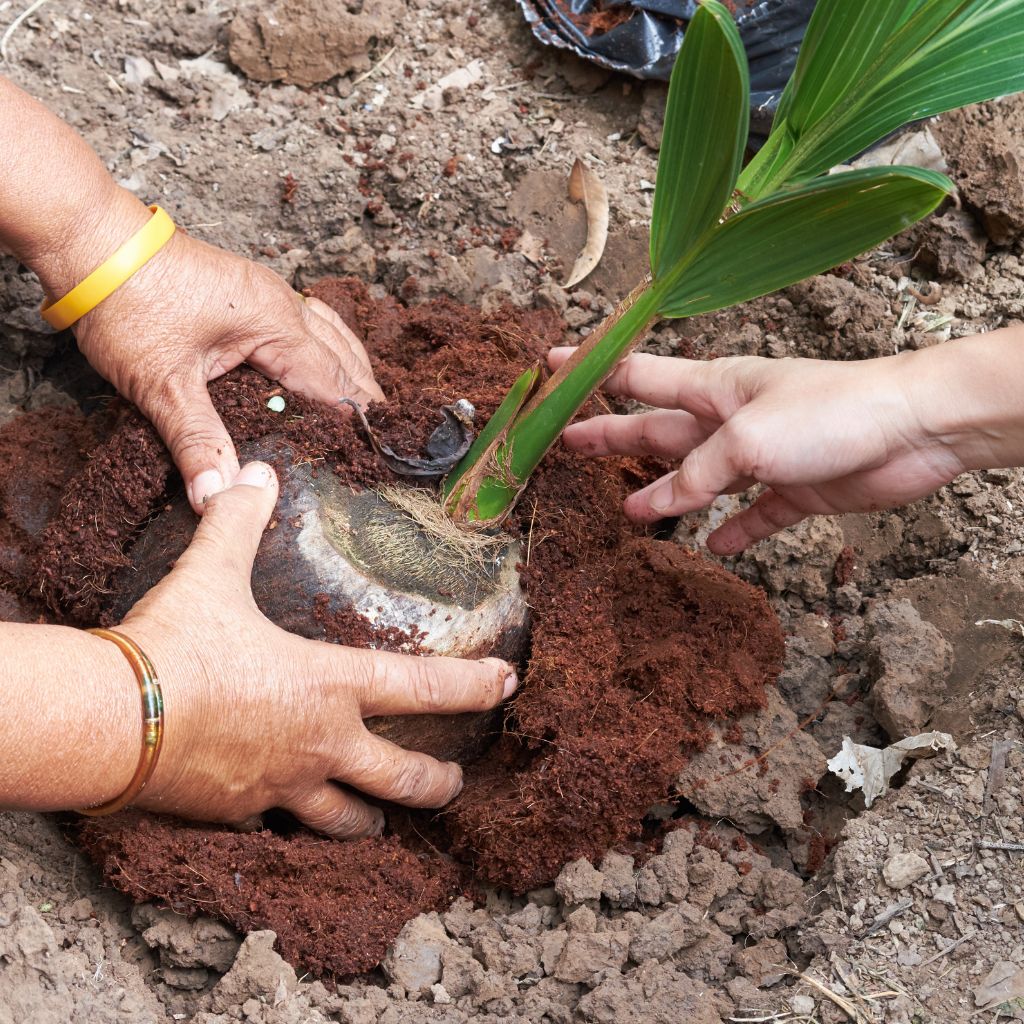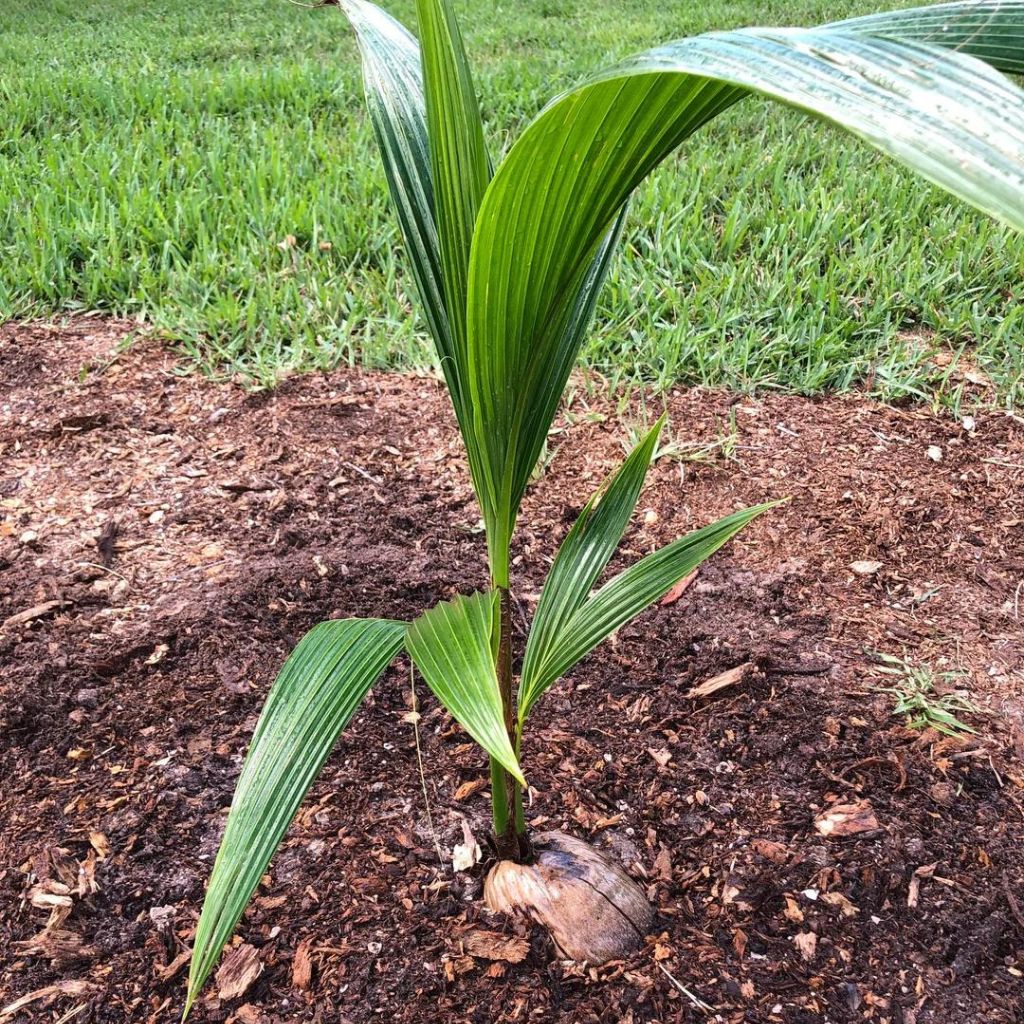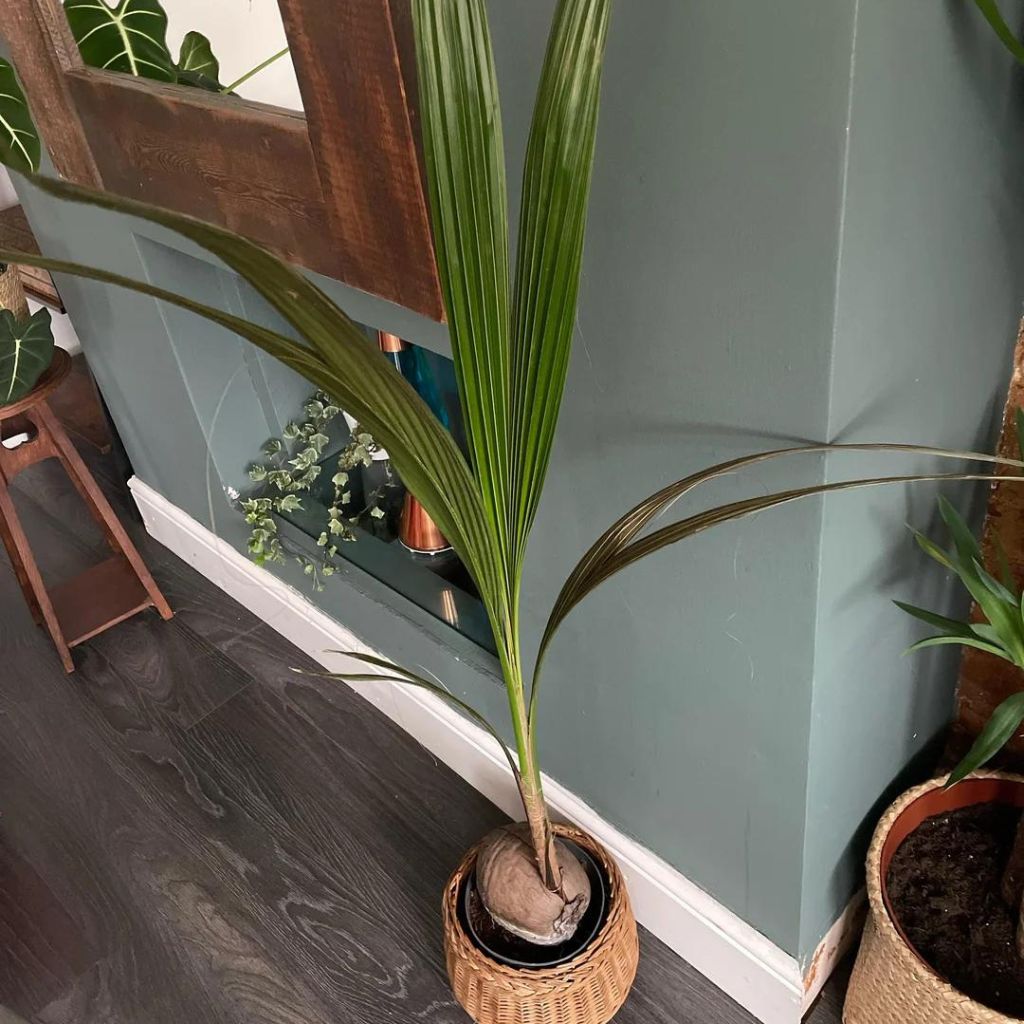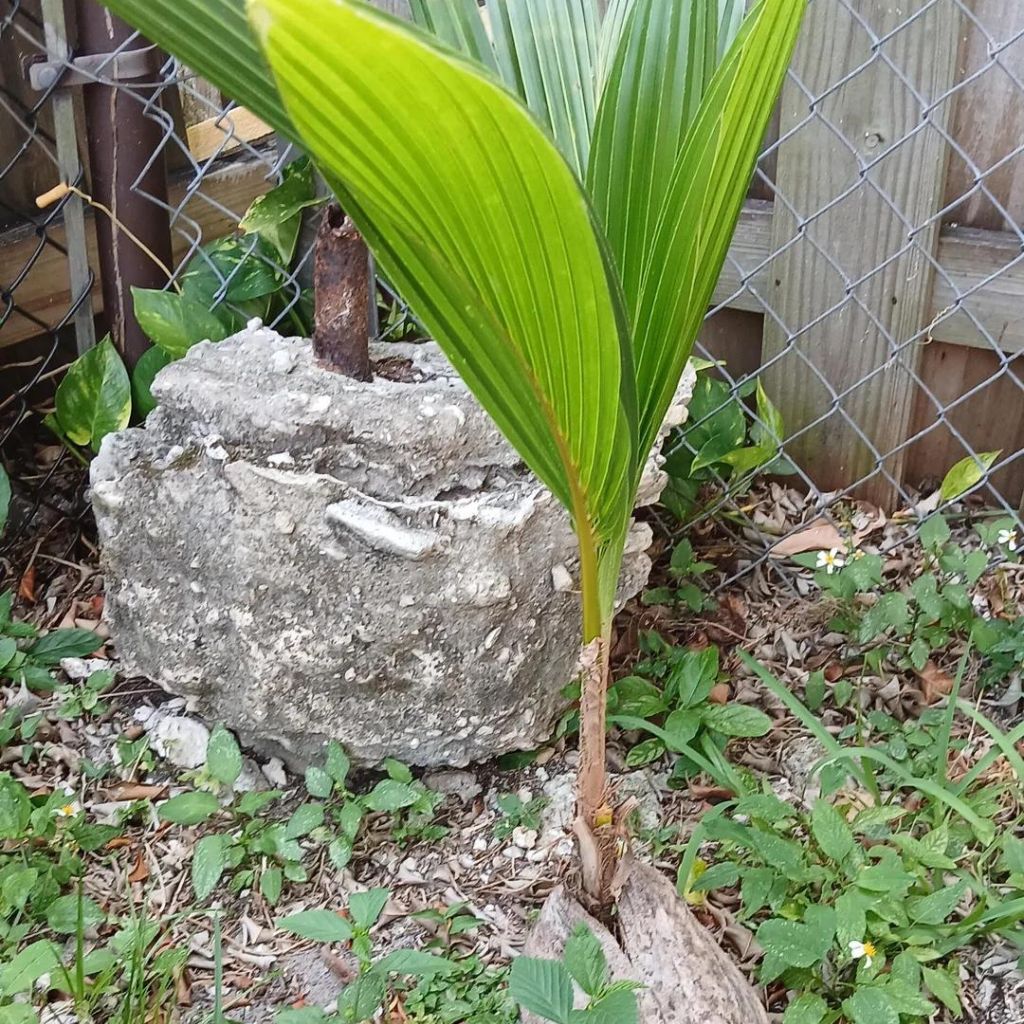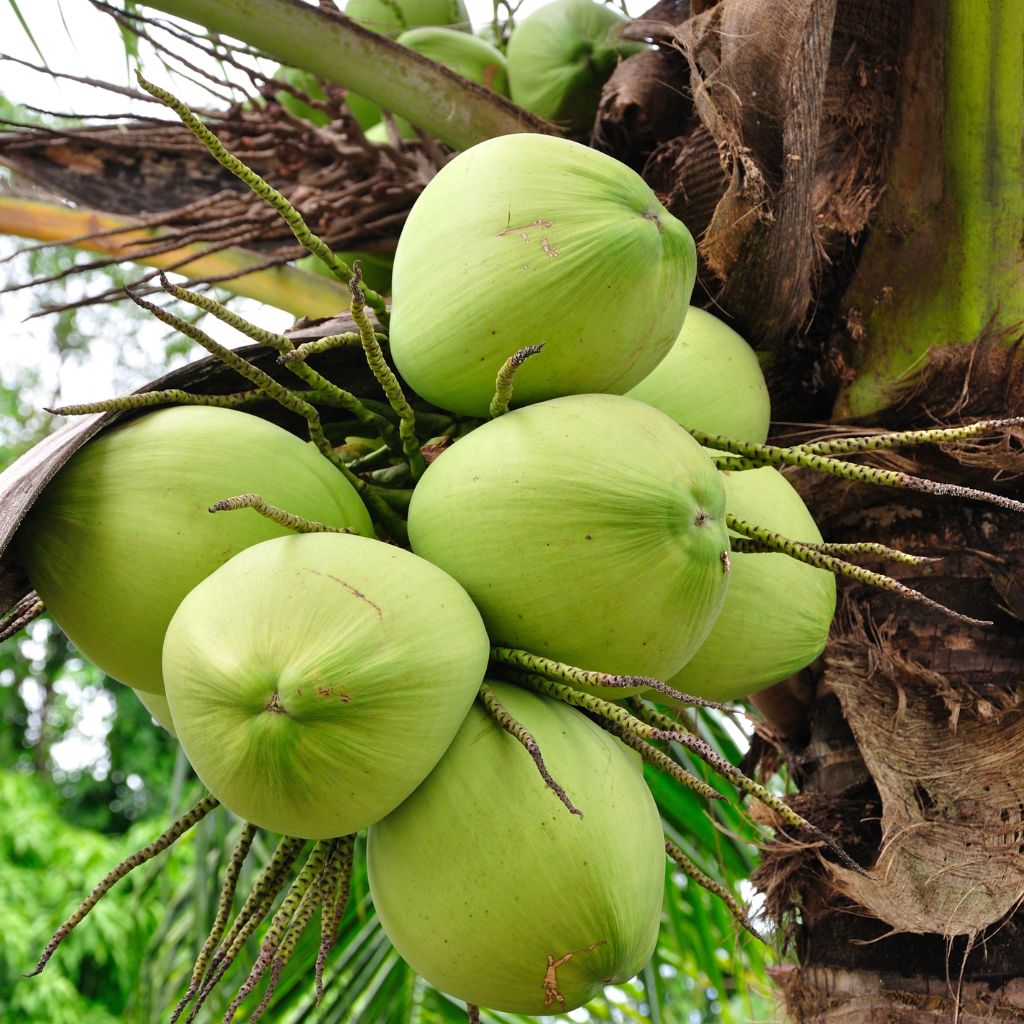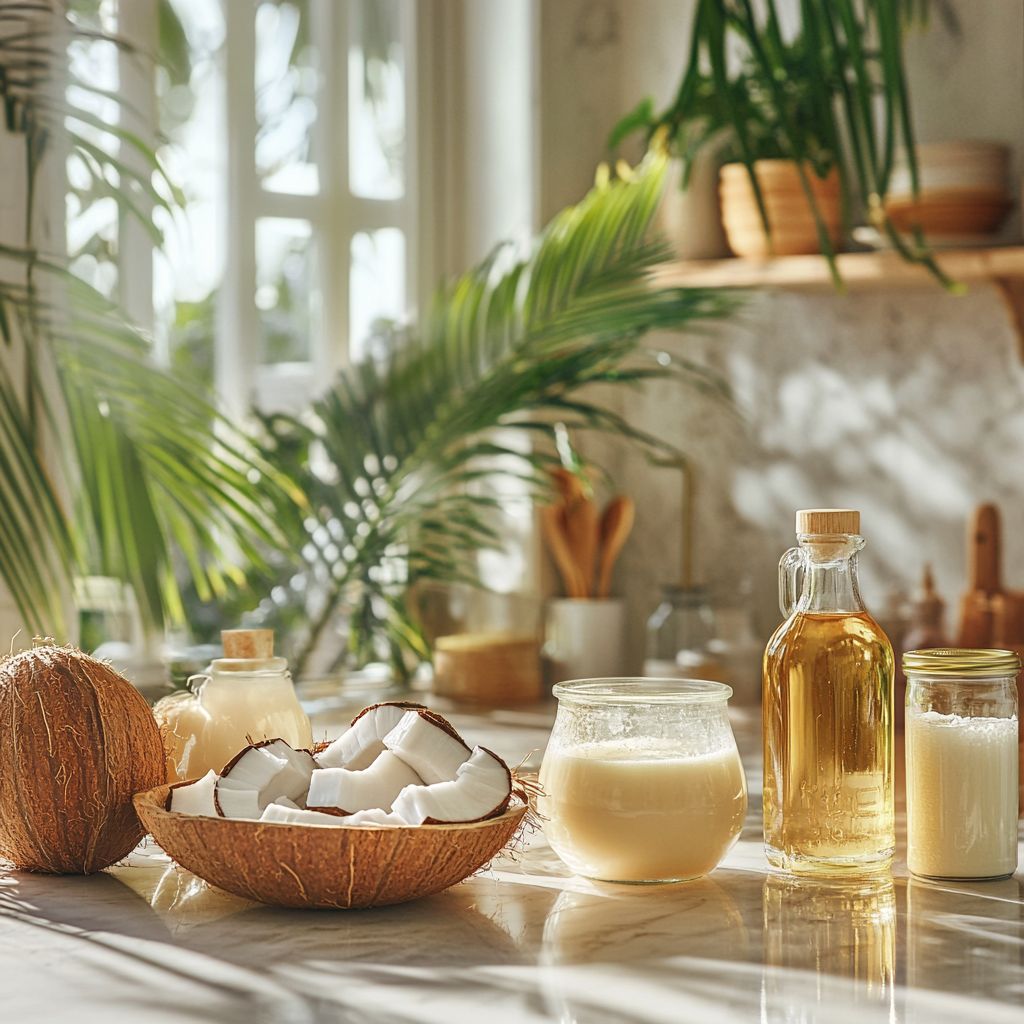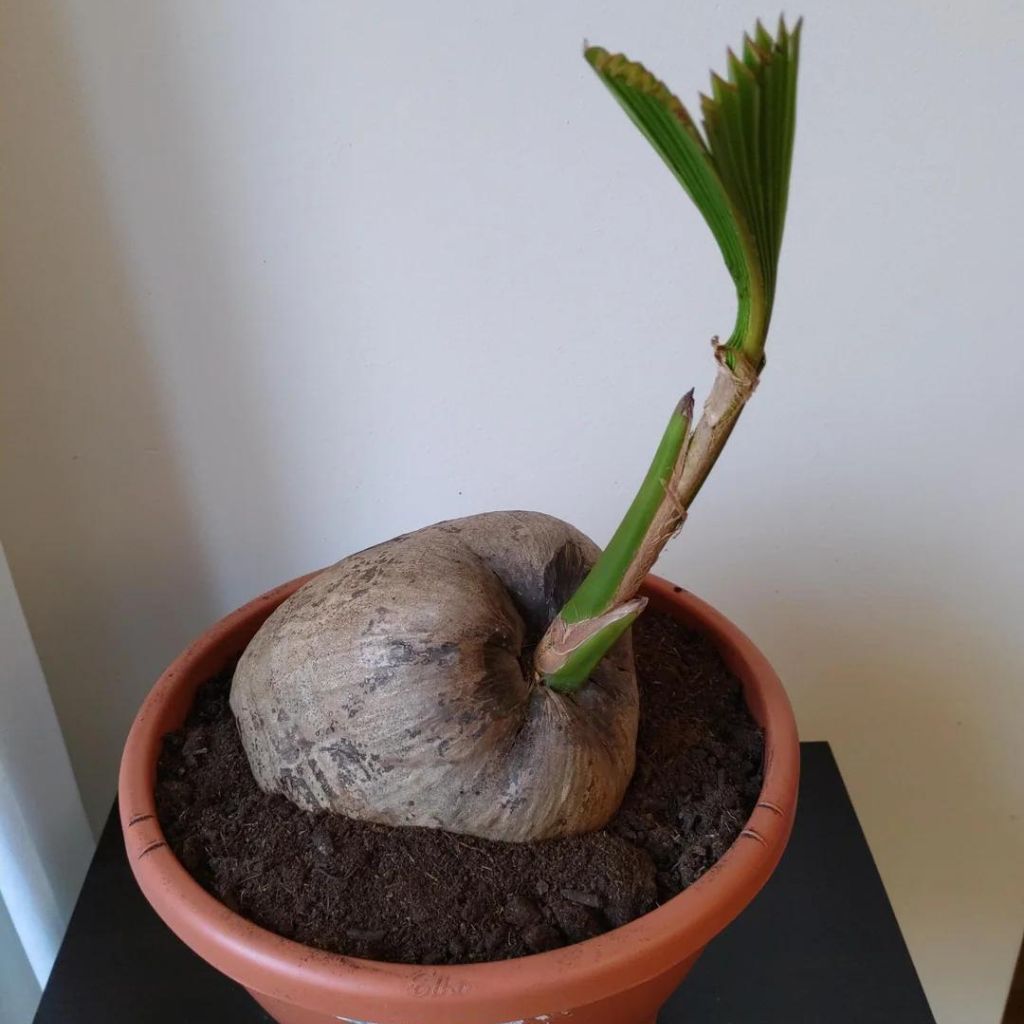Planting a coconut tree at home can be an exciting and rewarding endeavor, offering both aesthetic beauty and a potential source of coconuts.
The process, however, requires patience, the right tools, and an understanding of the specific conditions that coconut trees need to thrive.
This guide will walk you through each step of planting a coconut tree—from selecting the seed to caring for a fully grown palm.
Selecting Your Coconut
The first step in planting a coconut tree is choosing the right coconut. You need a mature coconut, as only mature coconuts will germinate and produce a healthy tree. Here’s how to select the perfect coconut:
Appearance: A mature coconut will have a brown husk rather than a green one. The brown shell indicates maturity, which is necessary for germination.
Weight and Sound: When you shake the coconut, it should feel heavy and you should hear water sloshing inside. This liquid is essential for germination and the growth of the embryo.
Inspect for Damage: Avoid coconuts with cracks, mold, or signs of rot. A healthy seed is crucial for successful growth.
Pre-Germination Process
Before planting the coconut, you’ll want to pre-germinate it to improve your chances of successful growth. This step softens the husk, making it easier for the coconut to sprout.
Soak the Coconut: Place your coconut in a container filled with room-temperature water. Use a weight to keep the coconut submerged, and let it soak for 3 to 4 days.
Seal in a Bag: After soaking, place the coconut in a large zip-lock bag with a small amount of water. Seal the bag and store it in a warm, dark location, such as near a water heater. The heat and humidity will promote germination.
Monitor Progress: Check the coconut weekly for signs of sprouting. You should see a small sprout emerge from one of the “eyes” (the three small, indented circles at the base of the coconut) after several weeks to a few months.
Preparing the Planting Site
Once your coconut has sprouted, it’s time to prepare the site where it will be planted. Whether you are planting directly into the ground or using a pot, the planting site needs to meet specific conditions to ensure successful growth.
Location: Coconut trees thrive in tropical climates with full sunlight. They need at least six to eight hours of direct sunlight daily, so choose a location that gets plenty of sun.
Soil Type: Coconut trees prefer well-draining, sandy or loamy soil. Avoid heavy clay soils, as they retain too much water and can cause root rot. If planting in a pot, use cactus or palm potting soil, which is designed for good drainage.
Space: Coconut trees can grow very tall, sometimes reaching up to 80 feet, so ensure the tree has enough room to expand. If you don’t have the space for a full-size palm, consider planting a dwarf variety, which only grows to around 16 feet.
Planting the Coconut
After selecting a location and preparing the soil, it’s time to plant your pre-germinated coconut.
Dig a Hole: If planting directly in the ground, dig a hole about 3 feet wide and 3 feet deep. This gives the roots plenty of room to spread and establish themselves. If using a pot, ensure it’s at least 10 gallons in size to accommodate the growing root system.
Place the Coconut: Position the coconut so that the sprout is pointing upwards and about a third of the coconut is buried in the soil. Cover the coconut with soil, leaving the sprout exposed.
Water: Water the newly planted coconut thoroughly, ensuring the soil is moist but not waterlogged. In the early stages, water the plant every two to three days to keep the soil consistently moist.
Watering and Irrigation
Coconut trees need consistent moisture, especially when they are young. However, overwatering can cause root rot, so it’s important to strike the right balance.
Frequency: Water your coconut tree weekly, ensuring the soil stays moist but never soggy. During hot or dry periods, increase watering to prevent the tree from drying out.
Rainwater: Collecting and using rainwater is a sustainable way to water your tree, as it mimics the tropical rainfall coconut trees are accustomed to.
Drainage: Make sure your planting site has proper drainage to prevent water from pooling around the roots. If you’re using a pot, ensure it has drainage holes at the bottom.
Mulching and Weed Control
Mulching helps retain soil moisture, reduce weed growth, and provide nutrients to the soil as the mulch decomposes.
Apply a layer of organic mulch, such as coconut husks, shredded leaves, or wood chips, around the base of the tree, leaving some space around the trunk to prevent rot. This mulch layer should be about 3 to 4 inches deep and replenished periodically.
Pruning and Maintenance
Regular maintenance ensures that your coconut tree remains healthy and productive. Here are the key aspects of maintaining a coconut tree:
Pruning: Remove any dead or diseased fronds to promote air circulation and improve the tree’s appearance. Be careful not to prune healthy fronds, as they contribute to the tree’s growth.
Training: Guide the growth of the tree by tying the fronds to the trunk during strong winds or heavy rain. Use soft fabric or twine to prevent damage to the tree.
Fertilizing: Coconut trees benefit from regular fertilization, particularly with a fertilizer high in potassium, magnesium, and other trace minerals. Apply fertilizer every three to four months for best results.
Protecting the Coconut Tree
Coconut trees are susceptible to pests, diseases, and environmental stressors. Here’s how to protect your tree:
Pests: Coconut mites and other insects can damage the tree. Monitor for signs of pests, such as yellowing leaves or small webs, and treat infestations with organic insecticides or natural predators like ladybugs.
Diseases: Fungal infections, such as bud rot, can be fatal. Ensure good air circulation, proper drainage, and avoid overwatering to reduce the risk of fungal diseases.
Wind Protection: Coconut trees can withstand strong winds, but young trees may need extra protection. Use windbreaks or plant taller shrubs around the tree to reduce wind exposure.
Harvesting Coconuts
It takes about five to seven years for a coconut tree to produce its first harvest, but the wait is well worth it. Here’s how to know when your coconuts are ready for harvesting:
Color: Mature coconuts typically have a brown husk, while younger coconuts are green. Wait until the husk turns brown for the best flavor and quality.
Sound: Shake the coconut—if you no longer hear water sloshing inside, it’s likely ready to harvest.
Weight: Mature coconuts feel heavy and dense, as the water inside has turned into coconut meat.
To harvest the coconuts, you can either climb the tree or wait for the coconuts to fall naturally.
Uses for Coconuts
Once your tree starts producing coconuts, you’ll have access to a variety of uses, including:
Coconut Water: Refreshing and hydrating, coconut water is rich in electrolytes and is perfect for rehydrating after a workout.
Coconut Meat: The white flesh inside the coconut can be used in cooking, baking, or eaten raw.
Coconut Milk: Blend coconut meat with water to create coconut milk, a delicious addition to curries, smoothies, and soups.
Coconut Oil: Extracted from the meat, coconut oil is popular for cooking, skincare, and hair care.
Planting a coconut tree at home can be a fulfilling project that brings a slice of the tropics to your backyard. From selecting the right seed to harvesting fresh coconuts, each step of the process requires attention and care.
With proper watering, sunlight, and maintenance, your coconut tree will thrive, rewarding you with years of beauty and delicious fruit. Enjoy the journey from seed to palm, and relish in the satisfaction of growing your own tropical tree.


